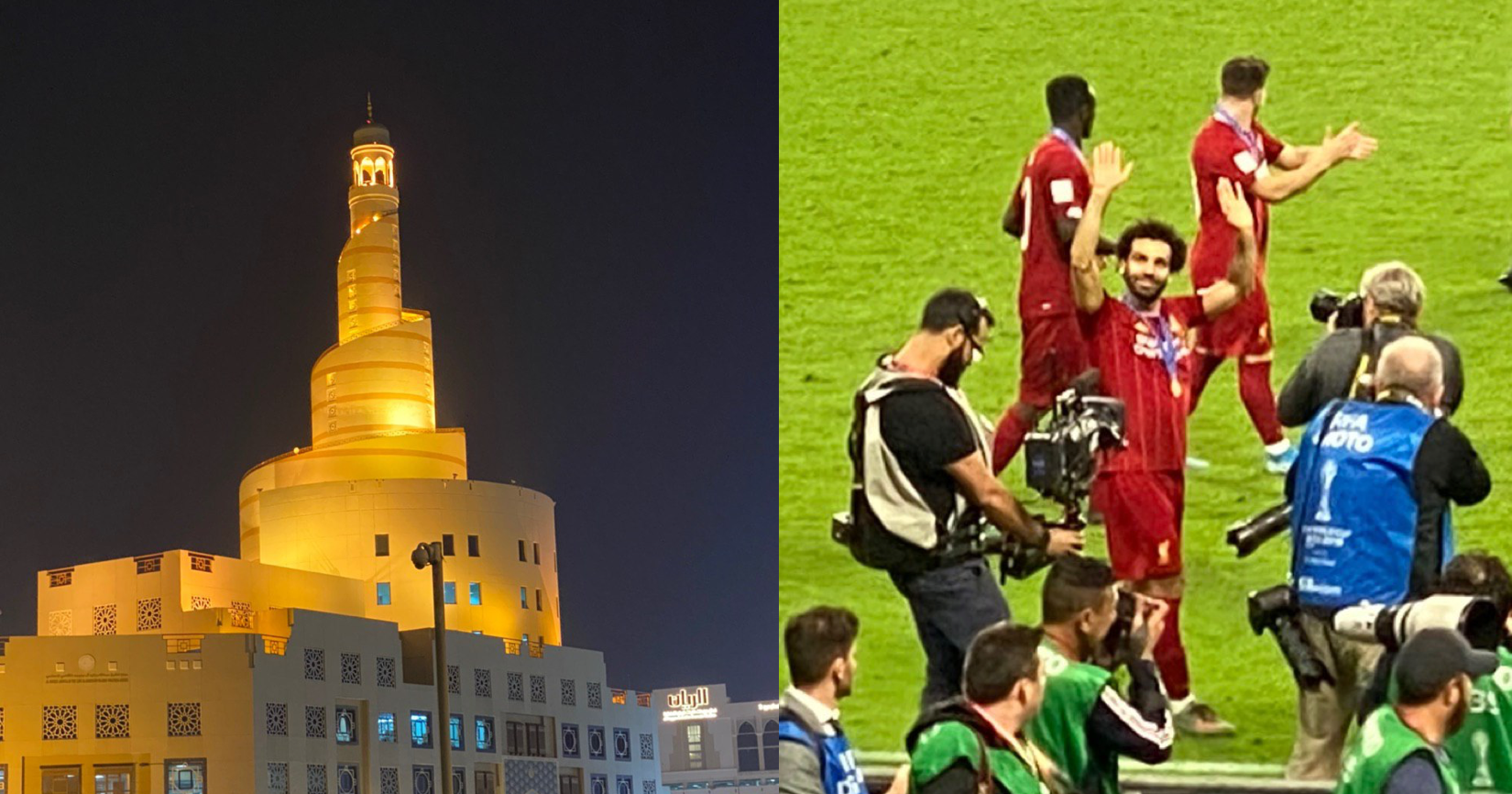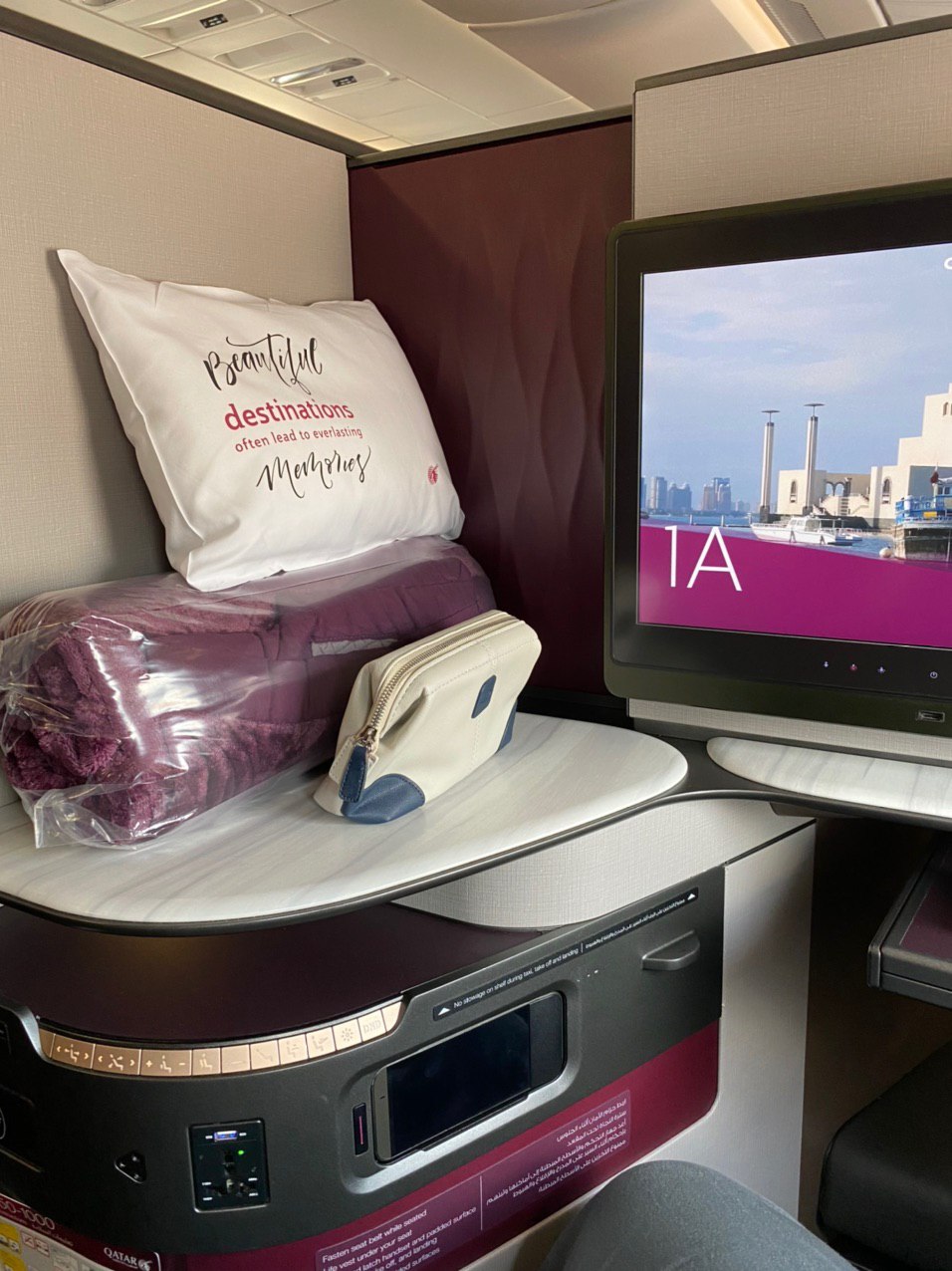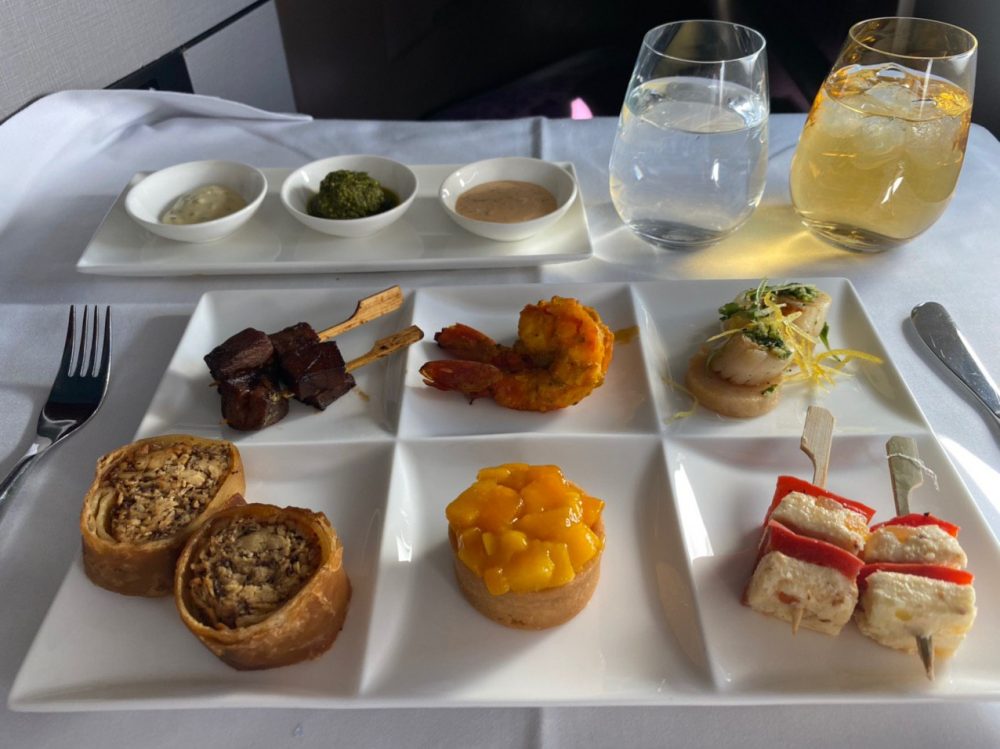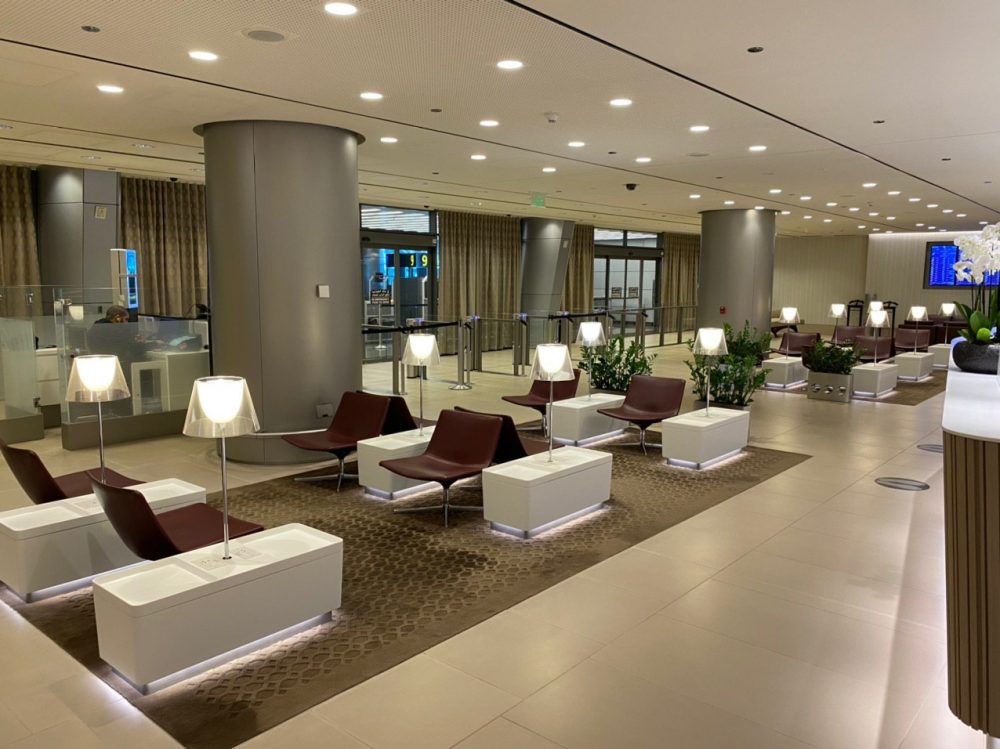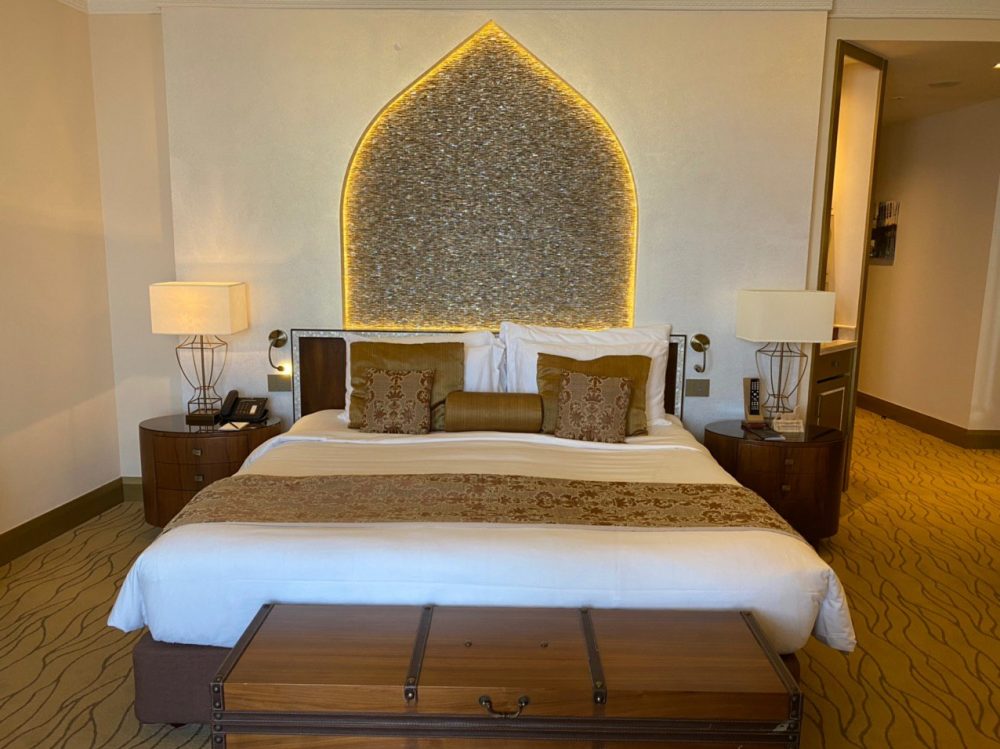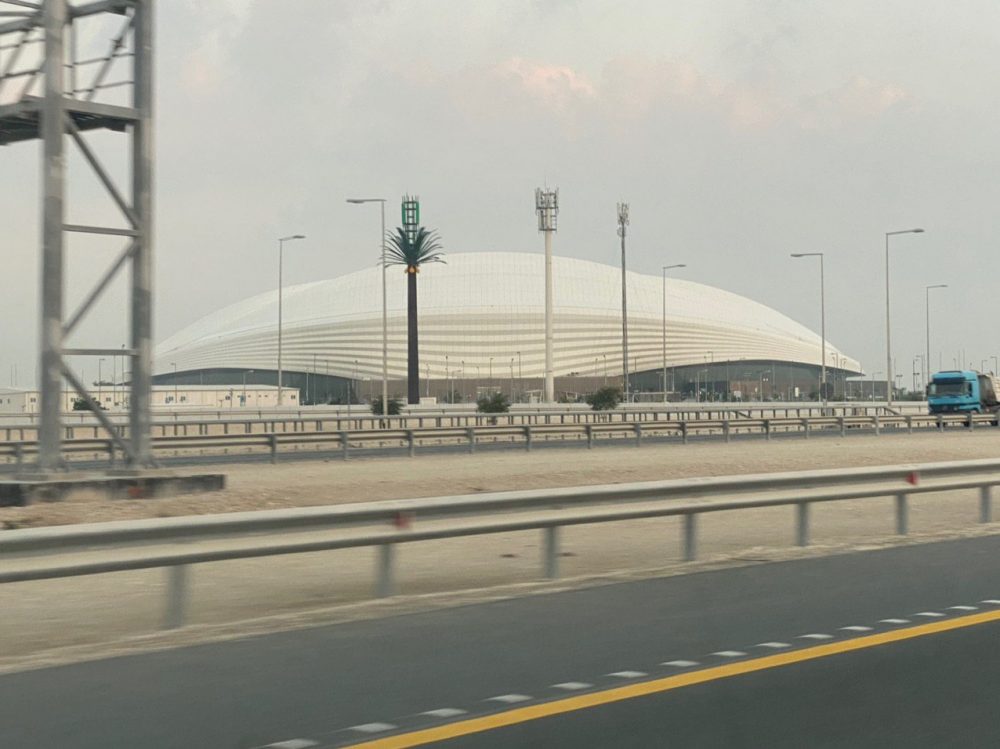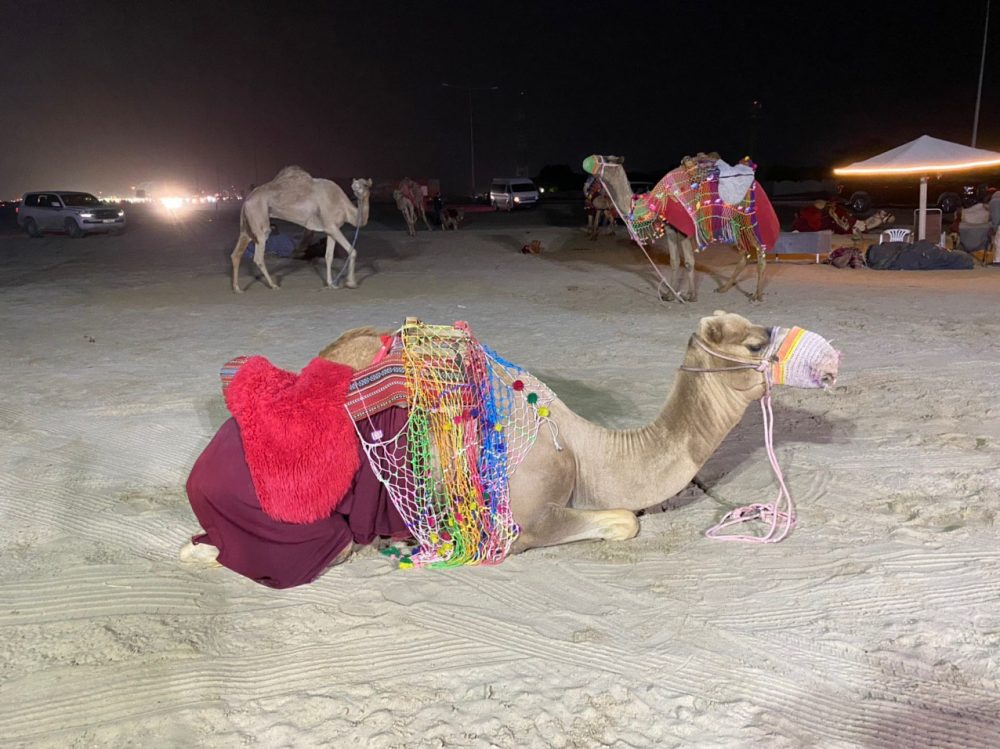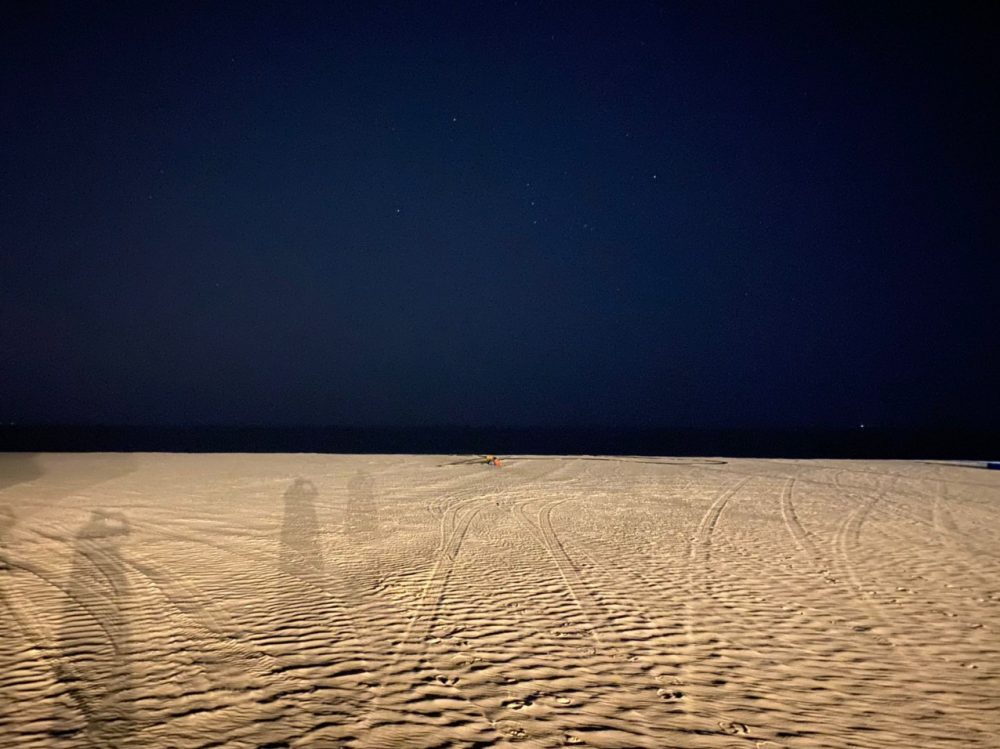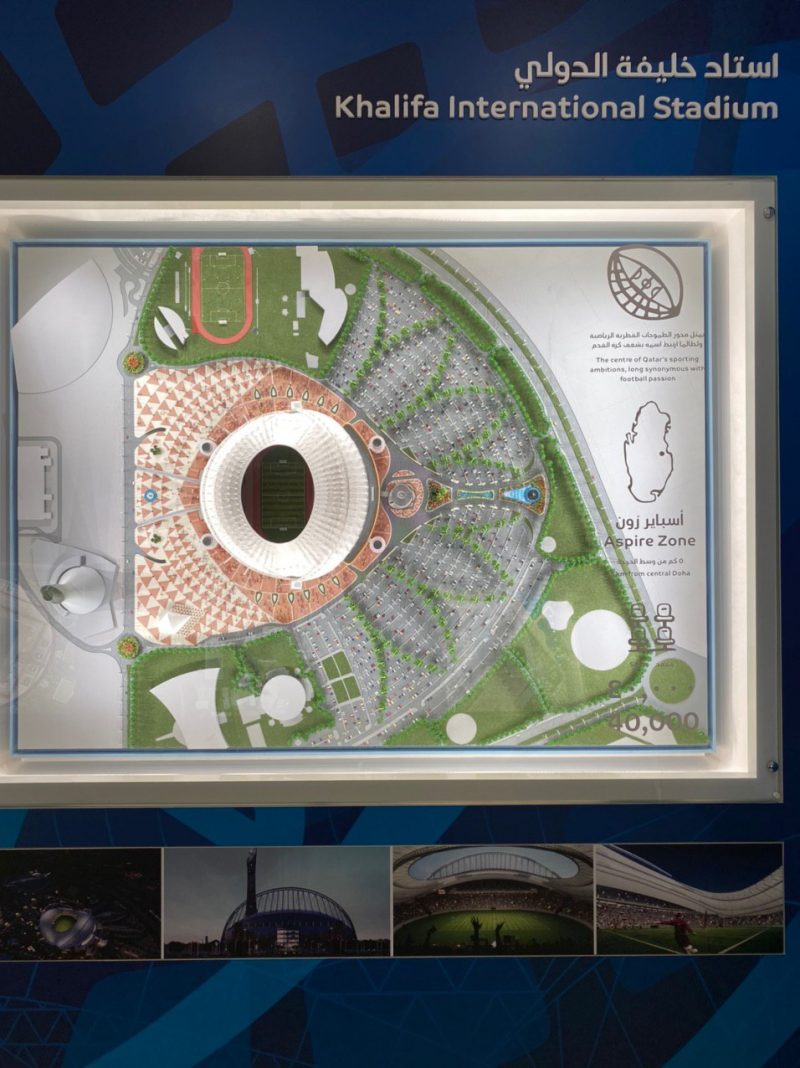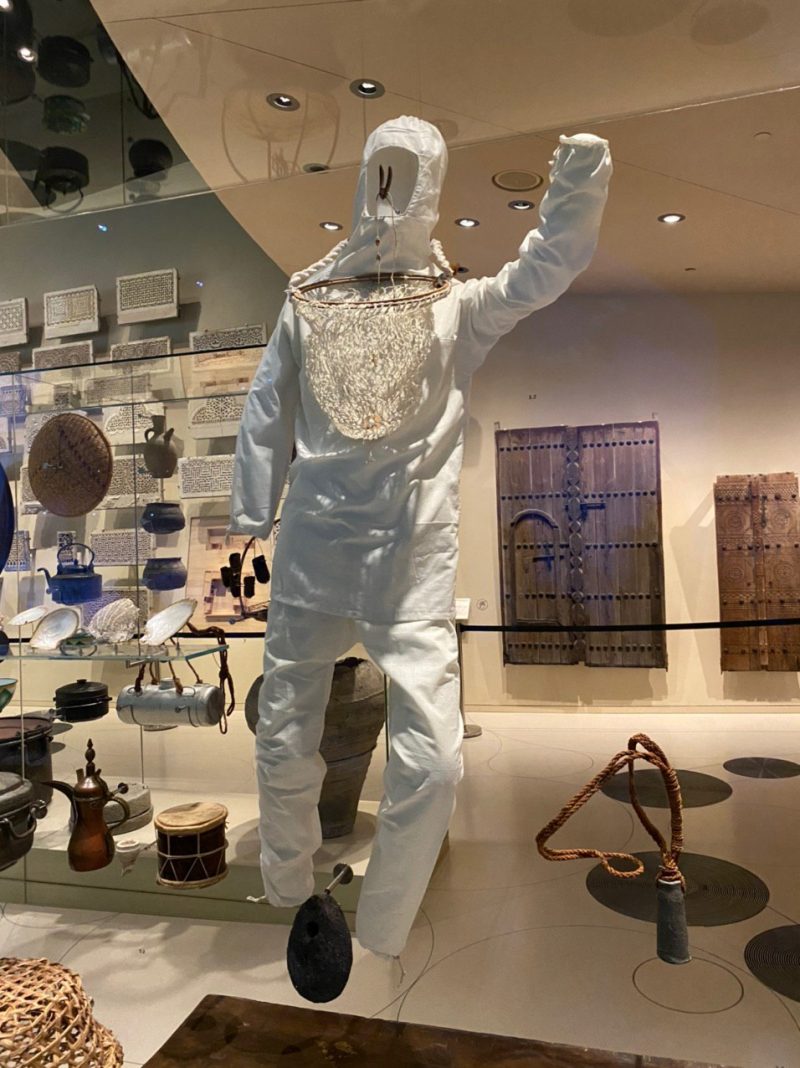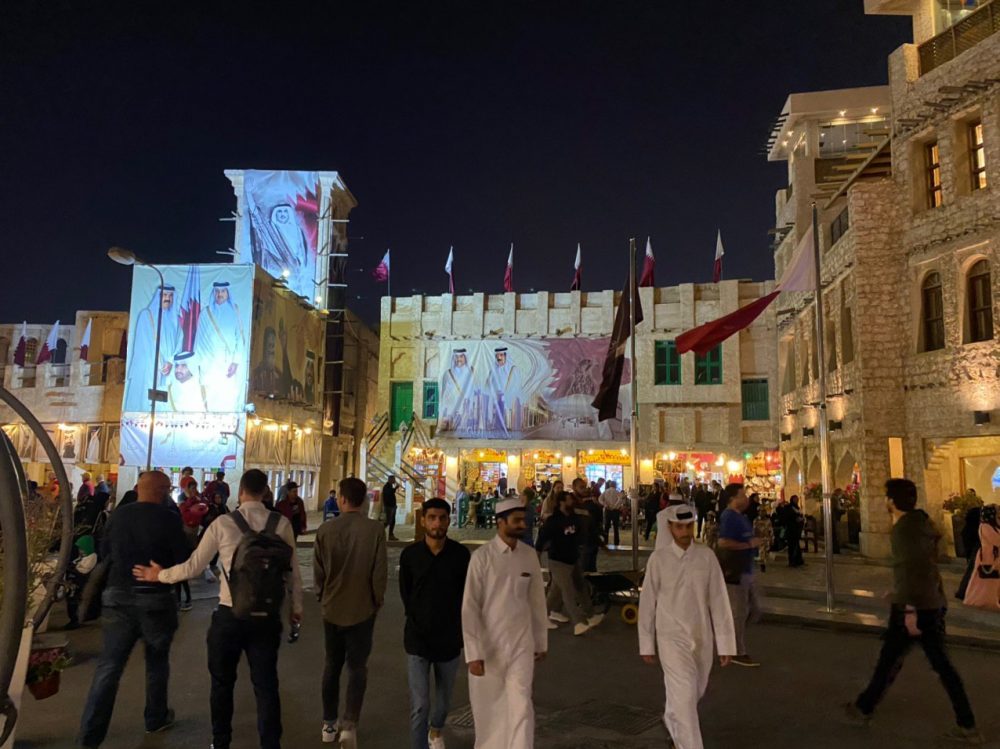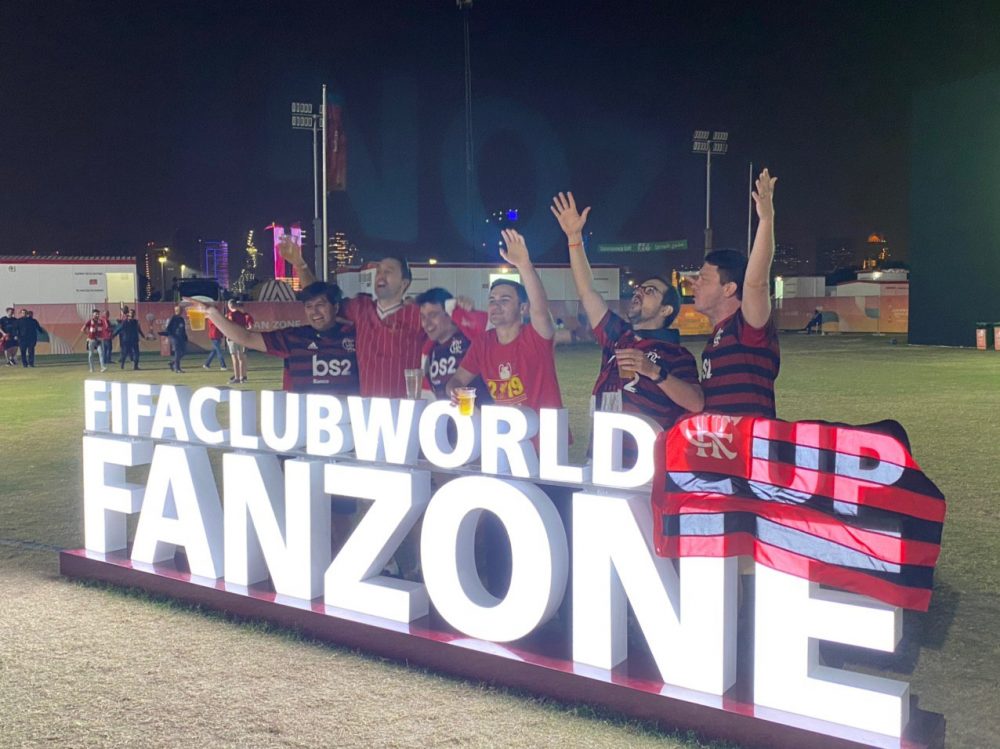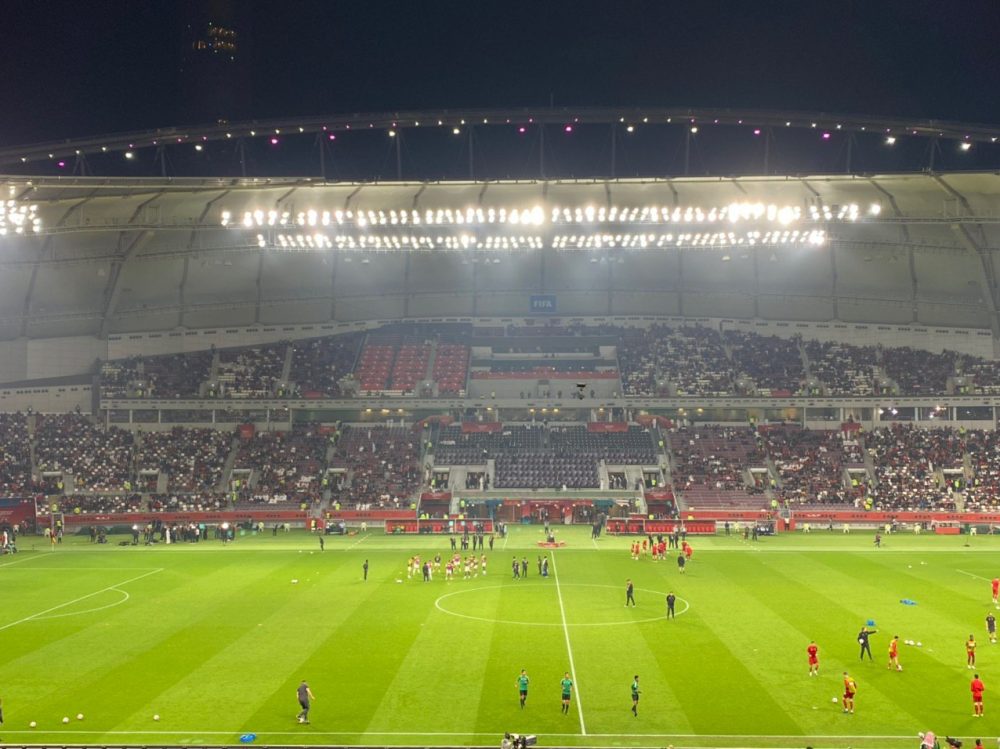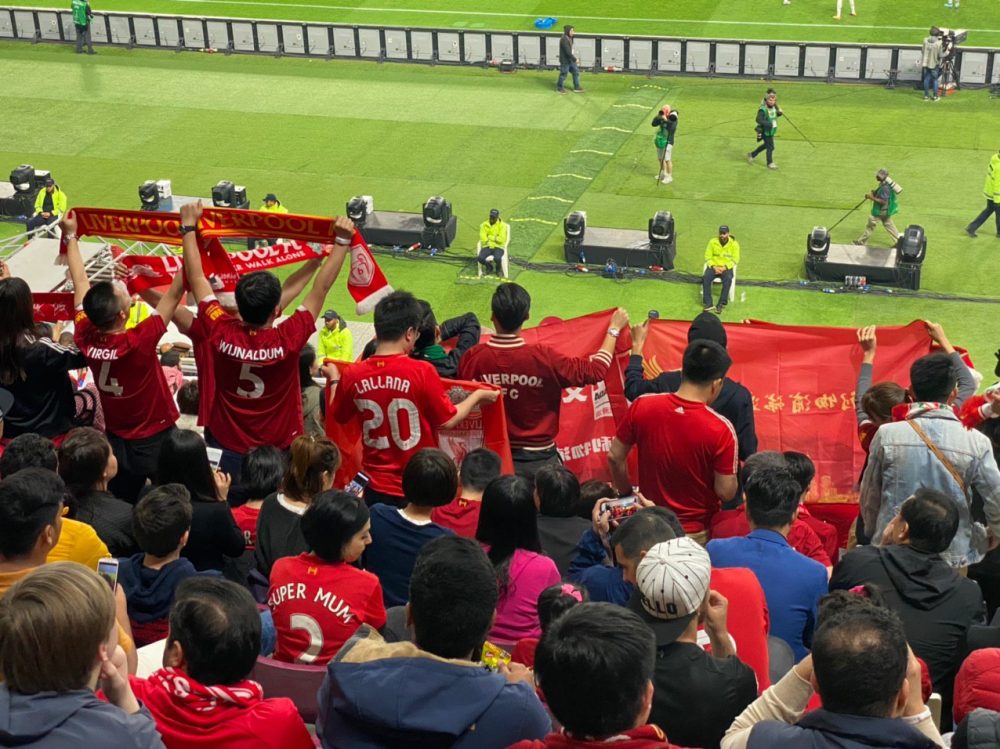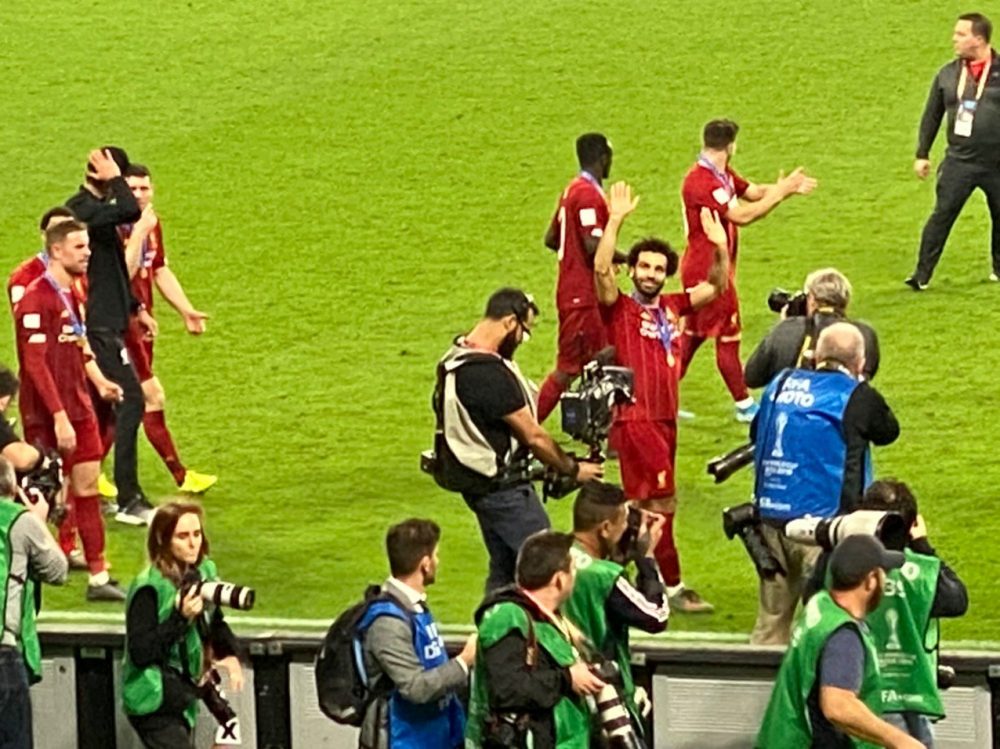The noise from the Brazilian fans all around me was deafening. Even after 90 minutes of intense football, they still pounded their drums and raised their voices, a united crowd bellowing Portuguese chants of victory in the cool Qatar night air.
I, together with a few other scattered Liverpool fans, struggled to make ourselves heard in response. Even our famed battle cry of "Allez allez allez", the song that carried us to triumph in Madrid in June earlier this year, was not enough in the crowd of over 45,000.
Fans of Clube de Regatas do Flamengo, Liverpool's opponents in the FIFA Club World Cup Final, were handily winning the contest in the stands. But who would prevail on the pitch?
We're going to Qatar
Sometime in November 2019, my editor had exciting news for me. "What do you say to going to Qatar to cover the FIFA Club World Cup tournament?"
A year ago, I would have said no. The Club World Cup features teams who have won the top regional competitions of their respective continents. For Europe, this meant the winners of the UEFA Champions League.
The 2018 winners of the Champions League happened to be Real Madrid of Spain -- who had defeated my beloved Liverpool in the final in Kiev, Ukraine, in what us fans considered to be controversial circumstances.
Watching Real Madrid win a trophy would have been too much for me to take. But miraculously, Liverpool had recovered from the agony of Kiev to achieve glory in Madrid, and become the 2019 European champions.
They would be participating in the tournament. The stars had aligned. I was going to Qatar.
Flight
This wouldn't be my first time flying to Qatar. I travel to the Middle East quite a bit, including Qatar.
But it would be my first time ever flying business class. I've never done it before, as tempting as it was. The cost of one flight would have been more than all other trip expenses combined. I would walk past the business class section on the way to my seat in economy class and think "Maybe someday."
Thanks to Qatar Airways, that day had come.
"Welcome aboard Qatar Airways," greeted the flight attendant. "First time with us?"
"No," I said. "But first time flying business class."
As a newbie, I was shown all the perks and amenities with the keen attention of a property agent showing off a newly-built condo. Here was a nice bag with a toiletry kit. Over there was a pillow and blanket. The TV screen was huge, much bigger than the ones in Economy. But most mind-blowing of all was the seat itself.
I couldn't believe my eyes (and my butt) as my seat extended, straightened, and flattened out at the push of a button. For the first time in my life, I could stretch my legs out fully while in a plane. If I wanted to, I could easily fall asleep. But I was too excited for sleep.
Rowena, my amazing flight attendant, came by to offer menus for dining options. The selections wouldn't have looked out of place at a high-end restaurant.
"What time will lunch be served?" I enquired.
"Any time you like," came the reply. "Just ask."
Another revelation. No longer would I be held hostage to mealtimes, missing a meal if I happened to nod off. No, I could eat whatever, whenever I wanted.
So eat I did.
I don't fly often enough to make flights routine (this lack of flights have of course exacerbated), so even a normal flight is a fun experience in my book. But the business class seat took it to the next level. It was unimaginable luxury, turning a commute into a gilt-edged, almost otherworldly experience.
It was a shame to say goodbye to my little pocket universe of comfort, but the plane had finally reached Doha. It was time for the next leg of my journey.
Welcome to Doha
Flying business-class grants you another perk, I discovered.
Instead of lining up with sprawling lines of other travelers to go through customs, I was instead led to a discreet lounge where I could get a drink and read a magazine before being personally attended to by a customs immigration officer.
Having endured the queues at Hamad International Airport before, it was almost worth the price of the ticket -- had I paid for one.
Having been last in Qatar in 2015, the skyline was noticeably more extensive. The boom in the natural gas market had resulted in dizzying wealth for the state and its citizens. Everywhere I looked, there were skyscrapers and shiny new chrome-and-glass architectural marvels.
After a seven-and-a-half-hour flight, albeit in total comfort, I was looking forward to a bit of downtime in the beautiful Marsa Malaz Kempinski five-star hotel, located on the man-made island of Pearl-Qatar.
My room was enormous and packed with every luxury imaginable.
But there was no time to waste. My hosts at Qatar Airways had offered me the chance of "exploring the desert", something unavailable in Singapore.
I hopped into another car, driven by my guide, Han, who had built a thriving tourist agency.
We swapped stories as we sped along the highways, away from the bright lights of Doha. He had never been to Singapore, but had heard of it. "Very clean," he said. I asked him about life in Qatar. Things had taken a downturn ever since the Saudi Arabia-backed blockade of 2017, and he was seeing fewer tourists.
We passed by one of the stadiums that the Qataris had built in anticipation of the upcoming FIFA World Cup in 2022, the greatest spectacle in the global football calendar.
Before long we reached a little waystation. I sipped hot tea in the shelter of a cloth tent, as ancient traders might have done, many years ago. The great paradox of the desert is that it gets freezing cold after the sun sets and the wind rises, chilling you to the bone. For someone still dressed in slacks and a button-down shirt, I felt distinctly out of place.
That feeling was only heightened when snuffling sound caught my attention. A great humped camel was tied up near the tent, with others around him. I braved the cold to venture outside and walk around the beast. It struck me that I had woken up in Singapore, and here I was, arm's length away from a camel on another continent.
Han returned, and encouraged me to pet the camel. I did, hesitantly. His fur felt like a stiff brush. He looked at me languorously, as if I was nothing more than a minor curiosity.
My tour was not over. The vehicle was prepped, and I was treated to a rib-rattling, bone-shaking ride over the sand dunes. I grabbed on tight with both hands and held on for dear life.
Despite my teeth rattling around my head, I noticed that the desert sands seemed to shine in the moonlight. I asked Han what caused them. It was groundwater, welling up from deep beneath us. But it was "salty", and not fit for consumption.
We came to a blessed stop outside what looked like a resort out in the middle of the desert. The staff explained that it was a place for tourists to sleep far away from civilisation, in the heart of the sand dunes.
Staring out at the desert and the night sky, a line from Stephen King's Dark Tower series came to mind.
"The man in black fled across the desert, and the gunslinger followed."
Labour concerns
The next day, I met my fellow journalists who had also been invited to Doha for the Club World Cup. Some were also mad Liverpool fans, including one who was in Anfield during the legendary 4-0 comeback victory against Barcelona in the Champions League. We found a lot to talk about.
Our next stop was the office for the Supreme Committee for Delivery and Legacy, the Qatar government body tasked with preparations for the World Cup in 2022. The Club World Cup would be a kind of a test run for that massive undertaking.
Two members of the communications team fielded our questions. First, we asked about the serious issue of the exploitation of foreign labour in the construction of the World Cup stadiums.
Previously, The Guardian had published pieces on the labour conditions in Qatar, focusing on low wages and health and safety concerns when toiling in the intense afternoon heat.
The media officials did not shy away from the questions, acknowledging that such abuses exist, although they seemed to put the lion's share of the blame on third-party companies and unscrupulous agents.
They assured us that there would be labour reforms implemented in early-2020, such as ensuring that a hotline will be set up where workers could call in anonymously with complaints, and the freedom to switch jobs.
The Guardian also reported that Qatar decided to abolish certain exploitative practices and implement labour reforms back in Oct. 2019, with Al-Jazeera reporting on Jan. 17, 2020 that it had scrapped restrictions on leaving the country for almost all foreign workers.
Building a stadium
We were also shown a display of the various stadiums that will be built for the tournament, including the Lusail, Al Rayyan, and Al Wakrah grounds.
Each included elements of traditional Qatari culture in their design, making them look more like massive art installations than a sports venue.
The stadiums themselves were designed with special cooling technology designed to circulate cool air around the building so that the players and the fans will be comfortable.
Qatar also seemed to have taken some pointers from the Chinese experience with the Beijing Olympics in 2008. After the tournament ended, the stadiums fell into disuse.
But for Qatar, there is a plan for every stadium after the World Cup ends, with some slated for new lives as a community hub, a marketplace, and other commercial uses.
One stadium, Ras Abu Aboud, was designed so that its seats could be easily disassembled after the tournament ends, with the pieces donated to communities in Africa so they could rebuild them as stadiums of their own.
Although the infrastructure-building process has been far from spotless, Qatar's sustainable infrastructure initiative is something that future tournament hosts could learn from.
Life in Qatar
After the presentation, it was off to experience two major attractions of Doha -- the Qatar National Museum, and the Souq Waqif night market.
The QNM, according to our guide, was very popular with the locals. Inside, the exhibits told the story of Qatar, from pre-historic times, to the first human settlements.
Video displays showed interviews with elderly Qataris, recounting their experience of life before modern times, when their communities moved around according to the seasons. They lived near the coast and fished during the hotter months, and moved inland to herd animals during the cooler months.
Then came the discovery of pearl-diving, which became an integral part of Qatar's economy. The arrival of the British was another milestone, as was Qatar's struggle for independence.
But the Qataris had devoted a section of the museum to another, more recent moment in history, the blockade of Qatar by Saudi Arabia and other countries in the Middle East and Africa.
Back in June 2017, Saudi Arabia, the only country that shares a land border with Qatar, implemented a strict blockade.
Diplomatic ties were cut, airplanes and cargo ships headed to Qatar had to change course, and the land border was sealed shut. Saudi Arabian citizens living in Qatar were forced to return, and vice-versa.
Saudi Arabia accused Qatar of financing terrorism, among other offences. Qatar has denied supporting terrorism, and commenters have speculated that the Saudi-led action is perhaps motivated in part by Qatar's growing wealth, influence and close relationship with Saudi Arabia's rival, Iran.
The museum displayed exhibits of Qatar's response to the diplomatic crisis. In response to losing its food imports, efforts were made to become more self-sufficient, such as expanding its local dairy industry. Although it lost diplomatic ties with some of its neighbours, it tried to strengthen ties with other countries in other parts of the world.
Far from disheartening the city's inhabitants, the people I spoke to seemed quietly resilient, confident that Qatar could weather the storm. One pointed out a hopeful sign that relations between Qatar and its powerful neighbour seemed to be thawing, with Saudi Arabian football fans travelling to Qatar to attend the earlier games of the Club World Cup, despite the ban.
The New York Times quoted one fan who said: "The conflict is an issue between governments. Believe me, ordinary people have no issues with each other. We are brothers."
Fan park
But if football could impact international politics, could it change domestic affairs as well?
On the night of the final, we were invited to a fan park, where football fans who did not have tickets could watch the match on massive screens.
Security seemed strict. The organisers told us they were committed to keeping a family-friendly atmosphere at the fan parks. They were intended to be a place where football fans of all stripes could mingle before, during and after the games.
It was one of the more surreal moments of my time in the Middle East to see people openly buying and drinking beer. Consumption of alcohol is still forbidden in most of the Middle East, and in the few places where it is permitted, you have to drink indoors in venues with special licenses.
It was a mundane scene, but one that was made unique considering where we were. Earlier, the FIFA organisers had expressed confidence about being able to manage football fans from dozens of different cultures, including female fans.
It was suggested, but not outright stated, that local police and security officers will undergo training in sensitive crowd control to prepare themselves for handling big crowds.
Despite the two sets of fans, there was no hostility. There was some banter, but it remained good-natured. Still, the atmosphere might have been different if fans of two bitter rivals were gathered together.
We spoke to a number of Flamengo fans as we mingled among the crowds in the park. Every last one of them were convinced that their team would be crowned champions of the world before the night was over.
We'd see about that.
Final
Despite not living in the same hemisphere as my team, I've attended a couple of Liverpool games before this one, and been to Anfield.
But this was something else. The massive Khalifa International Stadium was a fitting place for the occasion. Fans kept streaming past me, fans from all four corners of the globe.
Walking to our seats and taking that first look when you emerge from the stands, to see the lush green pitch before you and the hordes of fans stretching out in a great curve beyond -- it brought back strong memories of all the times I had visited our grand old National Stadium at Kallang. The country might be different, but the emotions were exactly the same.
The second thing that hit me was the wall of noise. The Flamengo fans were cacophonic. The Liverpool fans were valiantly trying to up the volume themselves. We were in a cauldron of colour and emotion. It all came down to this moment, and I felt extremely lucky to be part of it.
After a few minutes, I began to get very worried.
This wasn't the swashbuckling Liverpool team I knew and loved. Liverpool's Roberto Firmino nearly scored early on, but Flamengo arguably controlled the game better in the first half.
My fellow fans were a study in contrasts. Some kept boisterously singing and looked confident. Others looked like how I felt, tight-lipped and anxious. As always, the familiar doubt rose in my mind. Could we somehow mess this up?
When the second half began, it was another arduous experience. It seemed like the kind of game that would normally end in a goalless draw. But this was a final. One way or another, there would be a victor.
In the dying seconds of the game, we thought it would be Liverpool. Sadio Mane burst through on goal, and seemed set to score, until he was clipped and brought down by a Flamengo defender. As one, every Liverpool fan surged up and out of our seats, screaming the same word. "PENALTY!"
Sadly, we didn't get it. Then the match went into extra-time. The prospect of a penalty shoot-out awaited us.
But who else except Liverpool's very own Brazilian Roberto Firmino to pop up and save the day by stabbing the ball home, and sending us into raptures. Liverpool would win 1-0, no need for nail-biting penalties.
Liverpool had won. Liverpool were the world champions.
As we watched Jurgen Klopp and our other heroes walk around the stadium, showing off the shiny trophy and medals, we were certain that at long last, the English League title would be within our grasp.
Covid-19
Little did I know that my experiences were to be the last in a world that had never heard of the term Covid-19.
I flew back home, already looking forward to more football. But one by one, professional sports halted their activities due to Covid-19 outbreaks, with the English Premier League (EPL) not spared either.
There are more important things in life than football, of course. And I have to disagree with the legendary Liverpool manager, Bill Shankly. Football is not more important than life and death, and shutting things down was the right call while countries and their frontliners battled the virus.
But like all of us, football went into a kind of hibernation, waiting for the right time to return. This week, the EPL returns to our screens at last, albeit with drastic changes and precautions.
If Liverpool do manage to win the title, it will be in front of an empty stadium, celebrating at safe distances, with players that have all been tested negative for the virus.
It is a microcosm of what the world will look like here on out. Things will never be the same, and that includes football. But it goes to show that while Covid-19 has forced the world to adapt, it cannot permanently take away the things that we love.
Related story:
Top image by Sulaiman Daud.
If you like what you read, follow us on Facebook, Instagram, Twitter and Telegram to get the latest updates.
